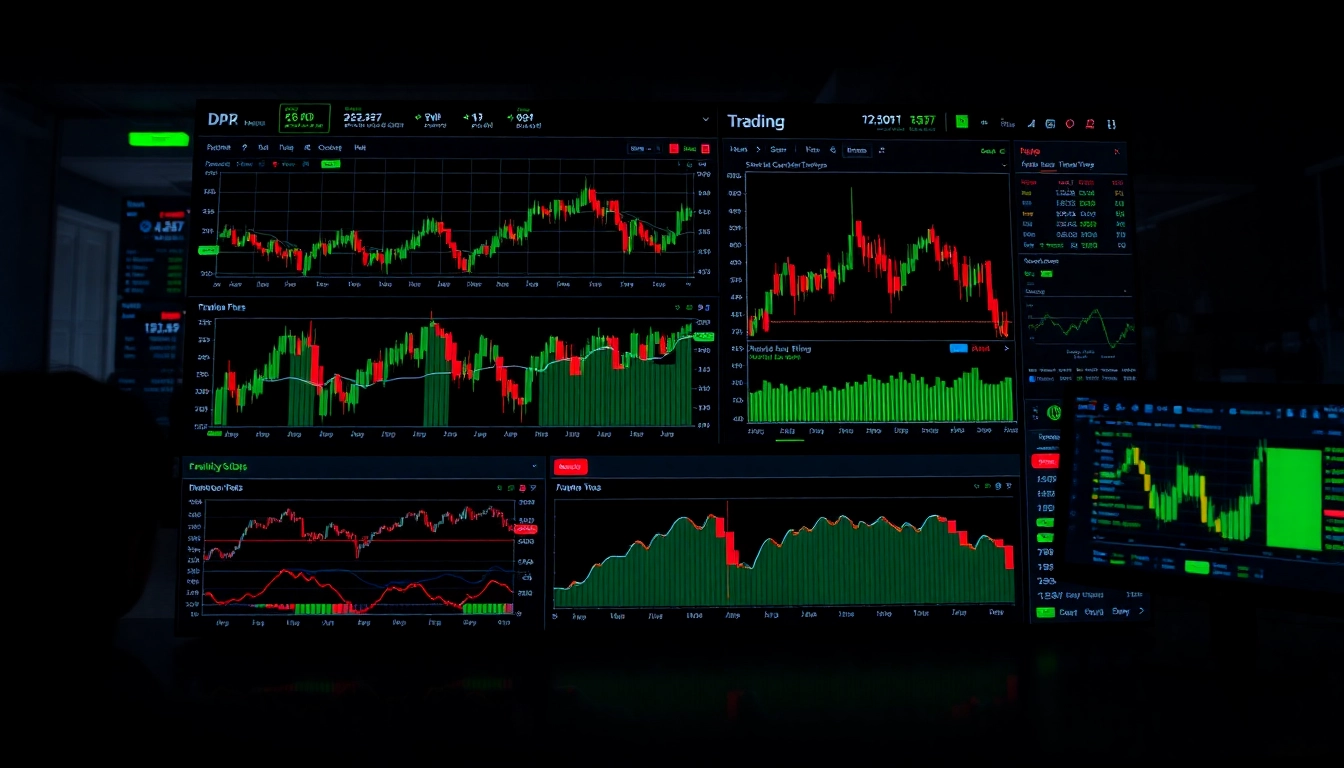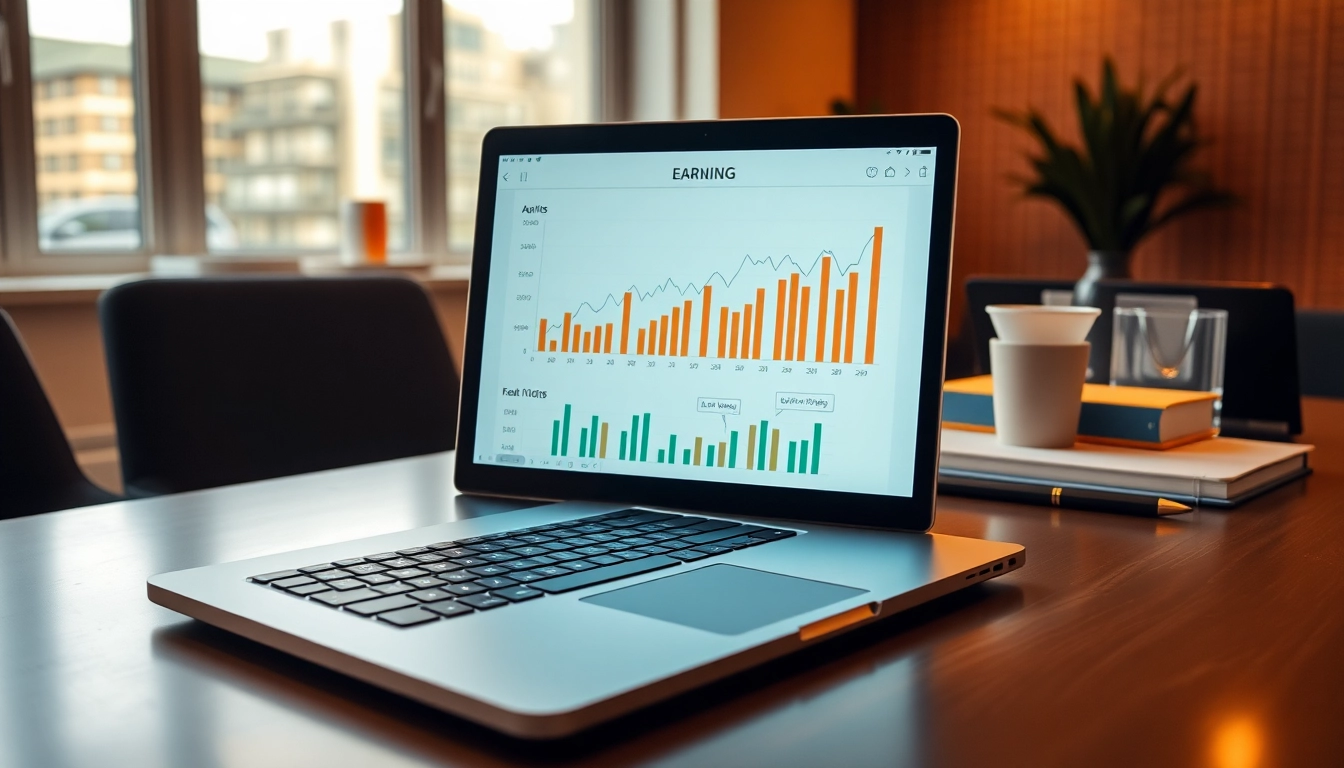Introduction to Trading View: Features and Benefits
In the fast-paced world of trading and investment, having access to a reliable, comprehensive, and user-friendly analysis platform is crucial for success. trading view stands out as one of the most popular platforms designed to meet these needs. It combines advanced charting capabilities, social networking features, and real-time data feeds to empower traders and investors at all levels. Whether you’re assessing stocks, cryptocurrencies, forex, or commodities, Trading View provides the tools necessary for informed decision-making and strategic planning.
Overview of Trading View as a Market Analysis Tool
Trading View is renowned for its dynamic visualization and analysis features, making it a go-to solution for technical traders worldwide. Originating as a web-based platform, it has grown into a comprehensive ecosystem that caters to both individual traders and professional institutions. Its core strength lies in its ability to collate and display real-time data across a multitude of financial markets—stocks, cryptocurrencies, forex, futures, and more—within an intuitive interface. The platform’s cloud-based architecture ensures seamless accessibility across devices, allowing traders to stay connected whether at home or on the move.
Additionally, Trading View seamlessly integrates social features, enabling users to share ideas, strategies, and insights. This community aspect fosters collaborative learning and provides diverse perspectives that can enhance trading strategies. The platform’s accessibility, combined with its powerful analytical capabilities, makes it a pioneering tool for understanding market dynamics.
Key Features That Enhance Trading Performance
Trading View is packed with features tailored to elevate trading performance. Here are some of the most impactful:
- Advanced Charting Tools: Offers more than 100 technical indicators, drawing tools, and chart types, empowering users to analyze market movements with precision.
- Customizable Watchlists and Alerts: Enables traders to monitor multiple instruments simultaneously. Alerts can be set for price levels, indicator signals, or specific chart patterns, ensuring timely responses.
- Real-Time Data and Market News: Provides instant updates on global markets, critical economic indicators, and breaking news, facilitating quick decision-making.
- Community & Idea Publishing: Users can publish and review trading ideas, engage in discussions, and learn from others’ experiences.
- Multi-Platform Accessibility: Available as a web platform, mobile app, and desktop application, ensuring flexibility in usage.
These features collectively contribute to improved trading accuracy, better risk management, and a more informed trading approach.
Comparing Trading View with Other Trading Platforms
While many platforms provide technical analysis tools, Trading View’s combination of features, community engagement, and ease of use sets it apart. Unlike standalone charting software or brokerage-specific platforms, Trading View offers a unified space where analysis and social interaction coexist. Its broad market coverage extends beyond equities to cryptocurrencies, forex, and commodities, providing a holistic view of global markets.
Moreover, the platform’s cloud-based infrastructure allows users to access their setups and ideas anywhere without the need for powerful hardware. When compared to platforms like MetaTrader or Webull, Trading View’s superior charting tools, vast indicator library, and vibrant community make it a preferred choice for both beginners and professional traders.
Optimizing Your Trading View Experience for Better Results
Setting Up Custom Watchlists and Alerts
To maximize efficiency, traders should create personalized watchlists consisting of their preferred assets. This allows quick access to relevant charts and data. Alerts can be fine-tuned based on price thresholds, indicator crossovers, or pattern formations. For example, setting an alert for a breakout above a key resistance level ensures that traders are notified instantly, enabling swift action.
Using Technical Indicators and Drawing Tools Effectively
Proficiency in technical analysis is essential for leveraging Trading View’s full potential. Mastering core indicators such as Moving Averages, RSI, MACD, and Fibonacci retracements enhances market understanding. Combining multiple indicators can confirm signals and reduce false positives. Additionally, employing drawing tools like trend lines, channels, and support/resistance levels helps visualize chart patterns and identify entry and exit points with clarity.
Integrating Market News and Community Insights
Staying updated with real-time news feeds and participating in community discussions can provide contextual insights that pure technical analysis might miss. Engaging with fellow traders’ ideas fosters learning and can uncover emerging trends or overlooked opportunities. Incorporating news sentiment analysis into your strategy can also improve decision accuracy, especially during volatile periods.
Advanced Trading Strategies Using Trading View
Advanced Chart Patterns and Technical Analysis
Beyond basic support and resistance levels, traders can analyze complex patterns such as head and shoulders, double tops/bottoms, triangles, and wedges. Recognizing these formations early can offer predictive insights into potential trend reversals or continuations. Custom scripts and indicators available on Trading View’s public library allow for tailored analysis suited to specific trading styles.
Backtesting Trading Strategies within Trading View
The platform’s built-in strategy tester enables traders to evaluate the historical performance of their strategies using real market data. This process helps in refining entry and exit rules, optimizing parameters, and understanding risk-reward profiles before deploying strategies in live trading.
Automating Trades and Utilizing Signals
While Trading View itself primarily offers analysis and alert functionalities, it integrates smoothly with trading bots and automation tools via alerts or third-party APIs. Traders can develop automated trading rules based on indicator signals, reducing emotional biases and increasing consistency in execution.
Maximizing Market Performance and Risk Management
Monitoring Market Trends with Real-Time Data
Consistent vigilance using Trading View’s real-time data feeds allows traders to adapt quickly to shifting market conditions. Identifying trend strength through volume measures and indicator confluences enhances decision-making precision.
Setting Stop-Loss and Take-Profit Orders Strategically
Effective risk management hinges on disciplined order placement. Using technical levels identified on charts to set stop-loss and take-profit orders helps protect capital and lock in gains. Trading View’s alerts can be configured to notify traders when prices approach these levels, enabling timely adjustments.
Evaluating and Refining Your Trading Approach
Continual assessment of trade performance, facilitated by Trading View’s analytics, allows traders to refine their strategies. Tracking success rates, drawdowns, and strategy equity curves over time supports a systematic approach to improvement.
Future Trends and Upgrades for Trading View Users
Upcoming Features and Platform Enhancements
Trading View continually invests in its platform, with upcoming features planned to bolster machine learning integrations, enhanced scripting capabilities, and expanded asset coverage. These upgrades aim to provide deeper insights and more automation options for traders seeking to stay ahead.
Leveraging Mobile Apps for On-the-Go Trading
The platform’s mobile applications enable traders to monitor markets, receive alerts, and analyze charts from anywhere. This mobility ensures traders can seize opportunities without delay, making real-time decisions based on live data and community insights.
Community and Educational Resources to Elevate Skills
Active community forums, webinars, tutorials, and trading challenges foster ongoing learning. Engaging with these resources helps traders elevate their skills, understand new technical tools, and adapt strategies to changing market environments.



